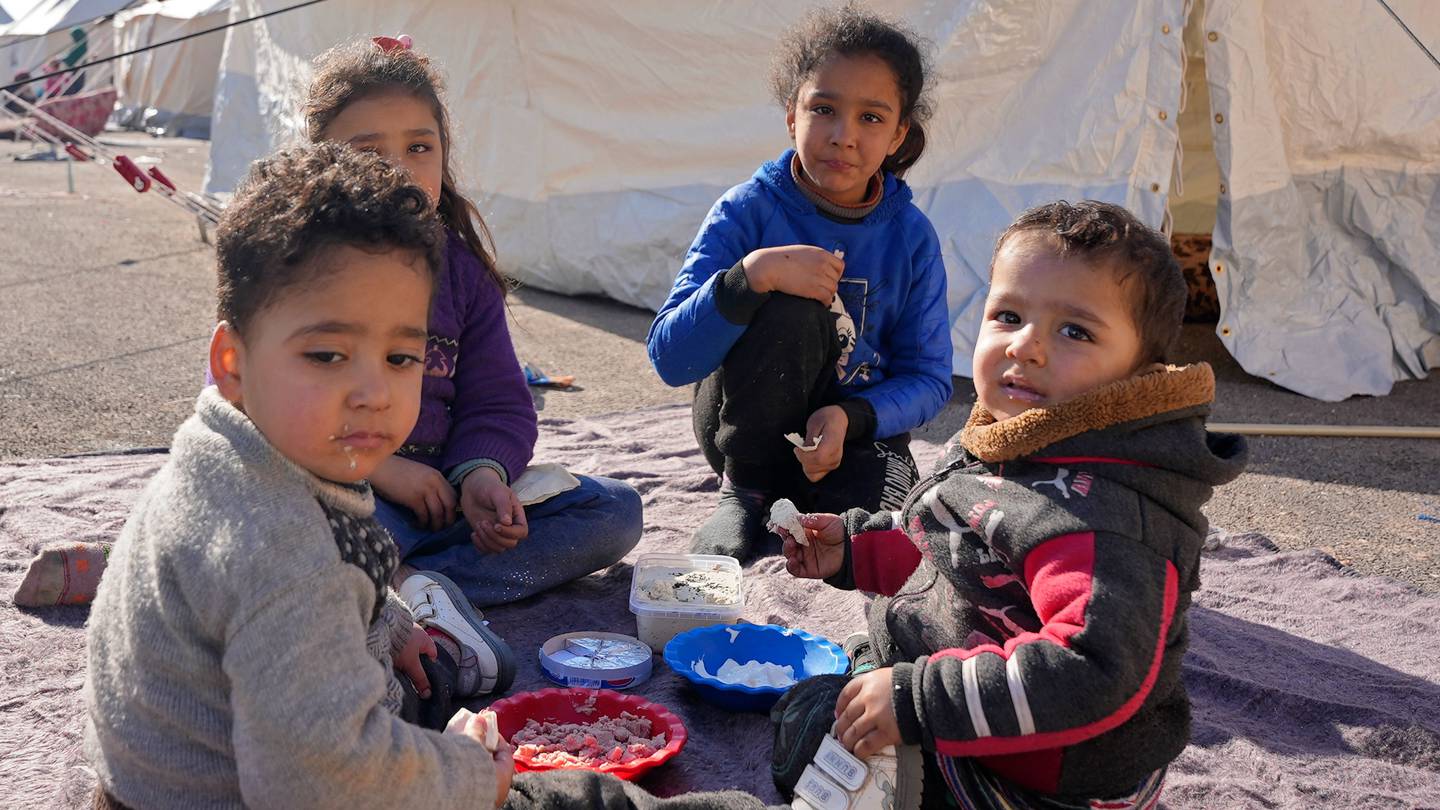Syria's child earthquake survivors at risk of abuse and exploitation, experts fear

Follow the latest on the earthquake in Turkey
Thousands of children in Syria are at risk of abuse in the aftermath of a powerful earthquake that has killed more than 42,000 people and resulted in hundreds, if not thousands, of children left unaccompanied, humanitarian groups told The National.
Last Monday, a 7.8-magnitude earthquake struck in Turkey. The tremors devastated swathes of Syria too.
Children whose families have died may be at risk of trafficking, while even those with families to go home to may face issues in the aftermath of the earthquake.
Amanda Brydon, global head of child protection policy and advocacy at Save the Children, told The National that most vulnerable were those children who had been separated from their families.
“The absence of care and protection by caregivers and families puts them at increased risk of further harmful child protection outcomes, including all forms of violence, abuse, exploitation and trafficking,” she said.
“What is very difficult to know is the numbers. It can be very difficult to track and to see where the children end up and if they are with the right people. This is why is critical to having strong safeguarding measures and protection for these children.”
International groups say they are working in both countries, pushing for proper reunification processes and assisting unaccompanied children.
The slowly reopening border points between the two nations represent an opportunity for aid, Ms Brydon said, but a challenge for preventing trafficking.
“Girls and children with disabilities are often more vulnerable, so keeping families together is what we recommend,” she said.
Child protection mechanisms
There is a child protection system within Turkey, but in Syria it depends on where the child is — whether they are in government-held areas or non-governmental regions — and that is where aid organisations play a critical part in filling in the gaps, Ms Brydon said.
In Syria, a protection cluster has been set up as a co-ordination mechanism between the UN, national and international groups to identify separated children.
“This would be apply if you see a child on the street or coming out of a building,” Ms Brydon said. “There's contact details for these focal points to connect them to the children and get them to a safe place.
“We are hearing from our partners on the ground that through these informal systems, children who are unaccompanied and not with their caregivers or parents or communities will be in collective centres.”
Save the Children has been able to reach more than 45,000 in the past nine days and the group is looking to “scale up child protection services” with its partners across the board.
Unicef says it is working to reunite families and assist unaccompanied children but many more agencies need to be involved to stop children slipping through the net, experts say.
Both Unicef and Save The Children have standard protocols to adhere to in disaster areas to prioritise children's welfare.
Firstly, after a child is rescued or discovered, the group identifies and registers them on a list of those separated from their parents, relatives or caregivers, Ammar Ammar, Unicef's Mena regional chief of advocacy and communication, told The National.
“Children without parental care are at a heightened risk of violence, abuse and exploitation in emergency situations whether during war, displacement of natural disasters,” Mr Ammar said. “The risk of trafficking also soars in emergencies.”
He said hospital and border crossing officials should also list all children they treat or rescue.
The next step is to provide the vulnerable children with foster or other community care, supervised by qualified staff. “Adoption should not occur during or immediately after emergencies” Mr Ammar said. “The use of the words ‘orphan children' should be used with extreme caution during emergencies as this can lead to long-lasting separation of children.”
Next, the child's mental and physical health should be prioritised.
Unicef is working with local groups in north-west Syria to provide psychosocial support, and has sent mobile child protection teams “to support displaced families with psychological first aid support, reaching approximately 6,000 children and caregivers”, Mr Ammar said.
It also aims to create a safe space for social connections between children and trusted adults for play, which can help youngsters develop coping mechanisms, he said.
For those who are returning to their parents, danger still lingers: “Economic hardship, parental stress and lack of social support may expose children to exploitation (child labour, child trafficking, irregular migration, child marriage) in the aftermath of natural disasters,” Mr Ammar said.
But social workers, health workers, teachers and communities can help identify those families with the most critical needs and provide individual support to prevent harm, he said.
Updated: February 17, 2023, 2:00 AM
 ABOUT PBJ LEARNING
ABOUT PBJ LEARNING
PBJ Learning is a leading provider of online human trafficking training, focusing on awareness and prevention education. Their interactive Human Trafficking Essentials online course is used worldwide to educate professionals and individuals how to recognize human trafficking and how to respond to potential victims. Learn on any web browser (even your mobile phone) at any time.
More stories like this can be found in your PBJ Learning Knowledge Vault.
This “Eyes on Trafficking” story is reprinted from its original online location.
ABOUT PBJ LEARNING
PBJ Learning is a leading provider of online human trafficking training, focusing on awareness and prevention education. Their interactive Human Trafficking Essentials online course is used worldwide to educate professionals and individuals how to recognize human trafficking and how to respond to potential victims. Learn on any web browser (even your mobile phone) at any time.
More stories like this can be found in your PBJ Learning Knowledge Vault.
